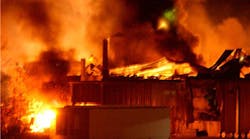A comprehensive combustible dust standard still does not exists, and the Chemical Safety Board (CSB) is seeking further input to put one in place.
The federal agency has extended its deadline for comment to December 31 from companies, regulators, inspectors, safety training providers, researchers, unions, and the workers of dust-producing operations.
Information received from responses will be used to "to explore the conditions that influence the control and management of combustible dust in order to seek out a deeper understanding of the real-world challenges to preventing dust explosions and, more importantly, new opportunities for safety improvements," the CSB stated.
Four recommendations to date have been issued to OSHA stressing the need for an issuance of a comprehensive general industry standard for combustible dust, and combustible dust safety is on the agency’s Drivers of Critical Chemical Safety Change list.
The CSB examined statements from workers and management and identified the factors influencing dust hazard risk perception, most notably:
- Hazard awareness: the degree to which workers and management have practical real-world understanding of combustible dust hazards will impact how they react to their environment when they observe dust;
- Previous incidents and fires: observing fires or hot work activities in a combustible dust environment that did not result in an explosion could create a false sense of security;
- Regulatory oversight: regulatory requirements do not reinforce one another. For example, sanitation requirements under the Food and Drug Administration (FDA) may meet food quality concerns, but not be sufficient to prevent a dust explosion;
- Sanitation: management and workers focus on cleaning all the time, providing a sense of vigilance; however, hazardous dust accumulation rates may exceed cleaning efforts;
- Ability to recycle material: in facilities where material can be recycled or reprocessed, there may be a greater tolerance for spills or leaks; and
- Perceived difficulty in housekeeping efforts: as dust accumulates on hard-to-reach and overhead surfaces workers perceive that those surfaces are too hard, or too dangerous, to reach for cleaning.
With previous findings and additional input, the CSB aims to further explore these factors in order to prevent future accidents. Read more about the agency's efforts to keep workers safe from combustible dust and how to provide input on the CSB website.
